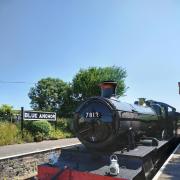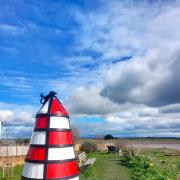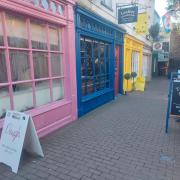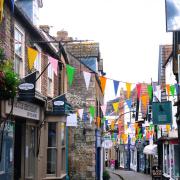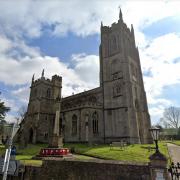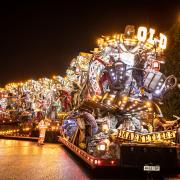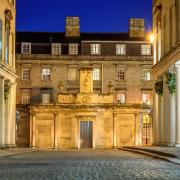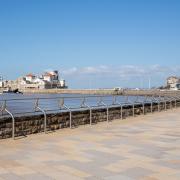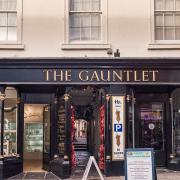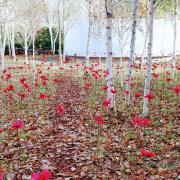Renowned for its industrial and manufacturing heritage, Yeovil also enjoys easy access to green spaces, has a buzzing Country Market run by the WI plus a Vintage Fair, and is a thriving community hub. Words by Malcolm Rigby
Renowned for its industrial and manufacturing heritage, Yeovil also enjoys easy access to green spaces, has a buzzing Country Market run by the WI plus a Vintage Fair, and is a thriving community hub. Words by Malcolm Rigby
Best known for…
Historically the town has been a major centre for glove making. The first mention of the business goes back to the 1300s and over the centuries the industry has generated a relative prosperity for the town – it is said that in the 1830s, three million gloves were made each year. The few remaining glove factories, which have now been converted for residential use, can be recognised by a glove weathervane on their roofs. For the last century the town has been associated with aircraft manufacture (the reason why it was bombed in the Second World War) and most notably Westland helicopters.In a sporting sense, Yeovil was the boyhood town of arguably the country’s best-ever cricketer, Ian Botham, who honed his skills as a lad on Mudford Rec. Yeovil Town (nicknamed the Glovers) are Somerset’s highest side in the Football League, currently residing in League One. But across the nation they are most notorious as non-league giant-killers in the FA Cup on the old sloping pitch at Huish, knocking out 20 league sides including a high-riding Sunderland side in 1949.
Simple pleasures
For the energetic, there’s walking, cycling and playing at Yeovil Country Park literally just a few minutes’ stroll from the hub of the town. This wonderful resource of 127 acres of countryside wraps itself around the southern and eastern sides of the urban area. There are five different sections, each with its own unique and defining characteristics: Wyndham and Summerhouse Hills provide excellent views, Penn Hill Park has a more formal setting, while Ninesprings offers grottos, Maori sculptures and, of course, springs. Organised events vary from the Ranger-led bat walks to the much larger May Bank Holiday Fayre. Too exhausting? Then just hang out at the ‘beach’, the green area around the church of St John the Baptist, and try to spot the buildings made from the local Ham stone.As we go to print there is currently a special offer of free parking at medium- and long-stay car parks on Tuesday afternoon in order to encourage people to shop locally.Park. The 57 acres are overlooked by the Royal Crescent and there’s something for everyone, be it bedding displays, golf, the traditional art of duck feeding or the tremendously popular children’s play area.
Hidden treasures
The contents of the former Museum of South Somerset are still open to view through the Community Heritage Access Centre, but by appointment only – ring 01935 462855. The collections include objects from local prehistory and geology as well as original Roman mosaics found in the area, but the bulk relates to Yeovil’s industrial past – in particular glove making, leather manufacture, newspapers and Westland. In addition there is a section devoted to the football team, a costume collection and photographs dating from the 1880s to the 1960s. The Original Alfred Jewel discovered in 1693 close to Athelney may be at the Ashmoleum, but there is a reproduction at the Centre.
Yeovil is very close to some of Somerset’s top attractions, so use the town as a base. Just down the road at Yeovilton is the Fleet Air Arm Museum representing the flying arm of the Royal Navy. There’s a seriously impressive range of planes through the ages on display, historical explanations, plenty of interactive and hands-on stuff, and of course the opportunity to board Concorde once again (see page 46). A few miles from the town centre you find the magnificent yellow 16th-century mansion of Montacute House, the Long Gallery of which exhibits some of the finest Tudor and Elizabethan portraits from the National Portrait Gallery collection. Nearby, and also owned by the National Trust, is Tintinhull Garden (as featured in our July issue) – an absolute must for any green-fingered wannabe looking for ideas.
Back in town, search out the recently created Vintage Fair on Market Street – itself a fine location to view the church and its surroundings. This place has everything, including a caf� serving brunch, lunch and teas, a shop, exhibitions and a book exchange.
It’s family friendly so there is a breastfeeding area, children’s activities and a pram park, but also a child-free zone; it is home to reading groups, workshops, stitch ’n’ bitch, not to mention knit ’n’ natter. It has a buzz of its own and is designed to generate a sense of community. The idea was put together by a couple of mums, Alison Garnett and Angela Hillier, one of whom was recovering from breast cancer.
Alison recommended the Women’s Institute Market on Friday morning: “It has been moved all over the town but now they are right near the church in the old school rooms, and called the Country Market. They sell things that they’ve made, like handicrafts, but they also sell their own produce, cakes they’ve made, chutneys, flowers, free-range eggs, vegetables and they do teas – it’s quite a hive of activity. They’re very dedicated, and they will do special orders, yet I think there’s quite a lot of people who don’t know where it is. They’re very friendly and they get to know who you are.
“I think that a lot of people would say that Yeovil doesn’t have a heart, there’s no community, but actually there’s a lot of community but you don’t always see it in the most obvious places, so you have to find it out for yourself. We also use Hayne’s butchers at the end of Princes Street, right at the end by the dual carriageway; they have been in town for years, since Victorian times, and they are so friendly that once you get to know them you would never go to another butcher.
“Mulberry’s and the Green Room are the nicest places to eat in town.”Angela said: “There’s a peaceful Victorian garden called Sydney Gardens that is just over the other side of Tesco and the dual carriageway. There’s a fountain, it used to have a bandstand, it’s in a conservation area and is very pretty with some lovely old trees. Because it’s on a cul-de-sac unless you were going there you wouldn’t see it. It’s so close but hidden, people really don’t realise that it is there.” She’s right, as you approach this green oasis the world appears to melt away.
Village life
Mudford – a small village that is home to the 12th-century Grade I Listed church of St Mary the Virgin. It is also on the Monarch’s Way, a long distance footpath that traces the escape of Charles II in 1651.Odcombe – boasts a picture-postcard Ham-stone pub in the Masons Arms, that not only serves good food and brews its own beers, but you can either stay in the rooms or pitch a tent on their campsite.
Getting there
By road the town is accessible via the A37 and the A30, while the A303 is just a few miles away. For SatNav users the postcode of the Tourist Information Centre is BA20 1SH. There are direct bus routes to Taunton and London. On the train, Yeovil Junction will take you to either London or Exeter, whilst Yeovil Penmill is on the Bristol to Weymouth line.



